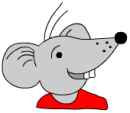 How big is a tonne?
How big is a tonne?
Can you picture a tonne of something? Not many people can do this but this worksheet tries to give some help. A tonne of water would fit exactly into a metre cube container!
What is the difference between mass and weight?
Continue reading “Free Y6 maths worksheets: Mass and weight”
Free Y6 maths worksheets: Mass and weight
Mass and weight
 19/30
19/30  Bond Builder starts with sets of coloured dot patterns which can be counted or added. There is a circle of numbers around the outside, in the middle the set of dots. Drag the sum onto the correct answer on the outside circle of numbers. Timed with a best score facility.
Bond Builder starts with sets of coloured dot patterns which can be counted or added. There is a circle of numbers around the outside, in the middle the set of dots. Drag the sum onto the correct answer on the outside circle of numbers. Timed with a best score facility. One of the most powerful tools children can have at their fingertips is the ability to double and halve numbers in their heads. These two maths worksheets look at doubling and halving 3-digit numbers.
One of the most powerful tools children can have at their fingertips is the ability to double and halve numbers in their heads. These two maths worksheets look at doubling and halving 3-digit numbers.